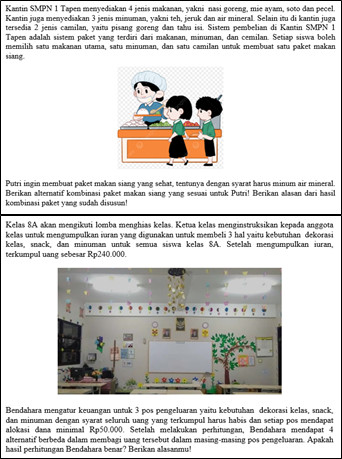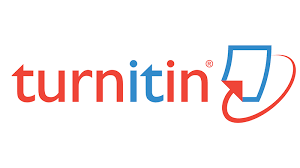EKSPLORASI KETERAMPILAN BERPIKIR KREATIF SISWA DALAM MASALAH NUMERASI DITINJAU DARI GAYA KOGNITIF
DOI:
https://doi.org/10.31100/histogram.v9i2.4246Keywords:
Creative Thinking, Numeracy, Cognitive StyleAbstract
ABSTRAK
Penelitian ini bertujuan untuk mengeksplorasi keterampilan berpikir kreatif siswa dalam menyelesaikan soal numerasi ditinjau dari gaya kognitif yang dimiliki, yaitu sistematik, terintegrasi, dan terpisah (split). Penelitian ini menggunakan pendekatan kualitatif jenis eksploratif, dengan subjek tiga siswa kelas VIII yang masing-masing merepresentasikan satu gaya kognitif. Pengumpulan data dilakukan melalui angket gaya kognitif, pemberian soal numerasi, wawancara, dan dokumentasi hasil kerja siswa. Analisis data dilakukan secara deskriptif kualitatif berdasarkan indikator kreativitas meliputi fluency, flexibility, originality, dan elaboration. Hasil penelitian menunjukkan bahwa setiap gaya kognitif menunjukkan kecenderungan yang berbeda dalam menampilkan keterampilan berpikir kreatif. Siswa dengan gaya sistematik hanya memenuhi satu dari empat indikator, yakni pada fluency. Siswa dengan gaya terintegrasi menunjukkan pemenuhan pada dua dari empat indikator, terutama fluency dan flexibility. Adapun siswa dengan gaya terpisah menunjukkan pemenuhan tinggi pada keempat indikator. Temuan ini memberikan gambaran bahwa gaya kognitif berperan dalam membentuk variasi cara berpikir kreatif siswa, dan dapat dijadikan dasar pertimbangan dalam merancang pembelajaran numerasi yang responsif dan adaptif.
ABSTRACT
This study explored students' creative thinking skills in solving numeracy problems regarding their cognitive styles: systematic, integrated, and split. An exploratory qualitative approach was employed with three eighth-grade students as subjects, each representing one cognitive style. Data were collected through a cognitive style questionnaire, numeracy problem tasks, interviews, and documentation of students' work. Data were analysed descriptively based on creativity indicators, including fluency, flexibility, originality, and elaboration. The findings revealed that each cognitive style exhibited different tendencies in demonstrating creative thinking skills. Students with a systematic style achieved only one of the four indicators: fluency. Students with an integrated style achieved two indicators, particularly fluency and flexibility. Meanwhile, students with a split style demonstrated strong achievement across all four indicators. Cognitive styles play a significant role in shaping variations in students' creative thinking processes and may serve as a foundation for designing responsive and adaptive numeracy instruction.
References
Anderha, R. R., & Maskar, S. (2021). Pengaruh Kemampuan Numerasi dalam Menyelesaikan Masalah Matematika terhadap Prestasi Belajar Mahasiswa Pendidikan Matematika. Jurnal Ilmiah Matematika Realistik, 2(1), 1–10. https://doi.org/10.33365/ji-mr.v2i1.774
Bell, H. (1978). Teaching and Learning Mathematics (In Secondary School). Wm. C. Brown Company Publisher.
Broverman, D. M. (1960). Dimensions of Cognitive Style. Journal of Personality, 28(2), 167–183. https://doi.org/10.1111/j.1467-6494.1960.tb01611.x
Coop, R. H. (1974). Cognitive style. In R. M. Gagné (Ed.), Psychology and the Problems of Society (257–272). Little, Brown, and Company.
Firdaus, H. P. E., Ningtyas, Y. D. W. K., & Hasanah, S. U. (2022). Proses Berpikir Siswa Ketika Memecahkan Masalah Matematika Berdasarkan Sikap Siswa. JEMS: Jurnal Edukasi Matematika dan Sains, 10(2), 325–333. https://doi.org/10.25273/jems.v10i2.13242
Fitria, L. D. (2023). Kemampuan Berpikir Kreatif Matematis Siswa Kelas VIII pada Materi Statistika Ditinjau Berdasarkan Perbedaan Gender dan Kemampuan Matematika di SMPN 3 Bondowoso. Universitas Islam Negeri Kiai Achmad Siddiq Jember. https://digilib.uinkhas.ac.id/27428/
Galatea, C. K., & Sari, N. A. R. (2022). Kemampuan Berpikir Analisis Siswa. Jurnal Gammath, 7(2), 76–85. https://doi.org/10.32528/gammath.v7i2.8427
Giancola, M., Palmiero, M., Piccardi, L., & D’amico, S. (2022). The Relationships between Cognitive Styles and Creativity: The Role of Field Dependence-Independence on Visual Creative Production. Behavioral Sciences, 12(7). https://doi.org/10.3390/bs12070212
Han, W., Susanto, D., Dewayani, S., Pandora, P., Hanifah, N., Miftahussururi., Nento, M. N., & Akbari, Q. S. (2017). Materi Pendukung Literasi Numerasi (Vol. 8, No. 9). Kementrian Pendidikan dan Kebudayaan, Tim GLN Kemendikbud. https://repositori.kemdikbud.go.id/11628/1/materi-pendukung-literasi-numerasi-rev.pdf
Hidayati, Y. M., Sukowati, B. A., & Hastuti, W. (2025). Kemampuan Berpikir Komputasi pada Pembelajaran Geometri Berbasis Geogebra Ditinjau dari Gaya Kognitif. Histogram: Jurnal Pendidikan Matematika, 9(1), 74–89. https://doi.org/10.31100/histogram.v9i1.4101
Ho, S., & Kozhevnikov, M. (2023). Cognitive Style and Creativity: The Role of Education in Shaping Cognitive Style Profiles and Creativity of Adolescents. British Journal of Educational Psychology, 93(4), 978–996. https://doi.org/10.1111/bjep.12615
Martin, L. P. (1998). The Cognitive-Style Inventory. The Pfeiffer Library, 8(1), 1–18. https://home.snu.edu/~jsmith/library/body/v08.pdf
Moma, L. (2015). Pengembangan Instrumen Kemampuan Berpikir Kreatif Matematis untuk Siswa SMP. Delta-Pi: Jurnal Matematika dan Pendidikan Matematika, 4(1), 27–41. https://core.ac.uk/download/pdf/267889498.pdf
Mudjiyanto, B. (2018). Tipe Penelitian Eksploratif Komunikasi. Jurnal Studi Komunikasi dan Media, 22(1), 65. https://doi.org/10.31445/jskm.2018.220105
Mulyaningsih, T., & Ratu, N. (2018). Analisis Kemampuan Berpikir Kreatif Siswa SMP dalam Memecahkan Masalah Matematika pada Materi Pola Barisan Bilangan. Pendekar: Jurnal Pendidikan Berkarakter, 1(1), 34. https://doi.org/10.31764/pendekar.v1i1.266
Munandar, U. (2009). Pengembangan Kreativitas Anak Berbakat. Rineka Cipta.
Napfiah, S. (2018). Analisis Tingkat Kemampuan Berpikir Kreatif dalam Pemecahan Masalah Matematika Ditinjau dari Gaya Kognitif. JP2M (Jurnal Pendidikan dan Pembelajaran Matematika), 4(1), 80. https://doi.org/10.29100/jp2m.v4i1.1781
OECD. (2022). PISA 2022 Results. In Global Transfer Pricing: Principles and Practice: Fifth Edition: Vol. I. https://doi.org/10.4324/9781315730233-2
Prabowo, A. D., Mariani, S., & Agoestanto, A. (2024). Metasintesis: Analisis dan Deskripsi Kemampuan Penalaran Matematis Ditinjau dari Gaya Kognitif. Histogram: Jurnal Pendidikan Matematika, Education, 8(1), 351–357. https://journal.matappa.ac.id/index.php/histogram/article/download/3342/1644/10229
Qomariyah, D. N., & Subekti, H. (2021). Analisis Kemampuan Berpikir Kreatif: Studi Eksplorasi Siswa di SMPN 62 Surabaya. PENSA E-JURNAL: Pendidikan Sains, 9(2). 242-246. https://ejournal.unesa.ac.id/index.php/pensa/index
Siswono, T. Y. E. (2011). Level of Student’s Creative Thinking in Classroom Mathematics. Academic Journals, 6(7), 548–553. https://eric.ed.gov/?id=EJ936674
Susanto, H. A. (2015). Pemahaman Pemecahan Masalah Berdasar Gaya Kognitif. Deepublish. https://www.google.co.id/books/edition/Pemahaman_Pemecahan_Masalah_Berdasar_Gay/wxyPDwAAQBAJ?hl=id&gbpv=1&dq=pemecahan+masalah&pg=PA20&printsec=frontcover
Thomas, G. L. (1990). Educational Psychology: A Realistic Approach. Longman.
Triyani, S., & Chumdari. (2025). Analisis Kemampuan Literasi Numerasi Siswa melalui Soal Model PISA Berbasis Konteks Keislaman di Sekolah Dasar Muhammadiyah 15 Surakarta. El Banat, 15(44), 196–211. https://doi.org/10.54180/elbanat.2025.15.1.196-211
Woolfolk, A. (1993). Educational Psychology. Allyn and Bacon.

Downloads
Published
Issue
Section
Citation Check
License
Copyright (c) 2025 Putri Kholifatun Diniah, Hana Puspita Eka Firdaus, Chusnul Khotimah Galatea

This work is licensed under a Creative Commons Attribution-NonCommercial-NoDerivatives 4.0 International License.
Please find the rights and licenses in Histogram: Jurnal Pendidikan Matematika. By submitting the article/manuscript, the author(s) accept this policy.
1. License
The non-commercial use of the article will be governed by the Creative Commons Attribution license as currently displayed on Creative Commons Attribution-ShareAlike 4.0 International.
2. Author's Warranties
The author warrants that the article is original, written by a stated author(s), has not been published before, contains no unlawful statements, does not infringe the rights of others, is subject to copyright that is vested exclusively in the author and free of any third party rights, and that any necessary written permissions to quote from other sources have been obtained by the author(s).
3. User Rights
Histogram: Jurnal Pendidikan Matematika's spirit is to disseminate articles published for free. Under the Creative Commons license, Histogram: Jurnal Pendidikan Matematika permits users to copy, distribute, display, and perform the work for non-commercial purposes only. Users will also need to attribute authors and Histogram: Jurnal Pendidikan Matematika when distributing works in the journal.
4. Rights of Authors
Authors retain all their rights to the published works, such as (but not limited to) the following rights;
- Copyright and other proprietary rights relating to the article, such as patent rights,
- The right to use the substance of the article in one's future works, including lectures and books,
- The right to reproduce the article for one's purposes,
- The right to self-archive the article,
- The right to enter into separate, additional contractual arrangements for the non-exclusive distribution of the article's published version (e.g., post it to an institutional repository or publish it in a book), with an acknowledgment of its initial publication in this journal (Histogram: Jurnal Pendidikan Matematika).
5. Co-Authorship
If other authors jointly prepared the article, any author submitting the manuscript warrants that all co-authors have authorized them to agree on this copyright and license notice (agreement) on their behalf and agree to inform their co-authors of the terms of this policy. Histogram: Jurnal Pendidikan Matematika will not be held liable for anything arising from the author(s) internal dispute. Histogram: Jurnal Pendidikan Matematika will only communicate with the corresponding author.
6. Royalties
This agreement entitles the author to no royalties or other fees. To such an extent that it is legally permissible, the author waives their right to collect royalties relative to the article regarding any use by Histogram: Jurnal Pendidikan Matematika.
7. Miscellaneous
Histogram: Jurnal Pendidikan Matematika will publish the article (or have it published) in the journal if the editorial process is completed. Histogram: Jurnal Pendidikan Matematika h editors may modify the article to a style of punctuation, spelling, capitalization, referencing, and usage that deems appropriate. The author acknowledges that the article may be published to be publicly accessible, and such access will be free of charge for the readers, as mentioned in point 3.




